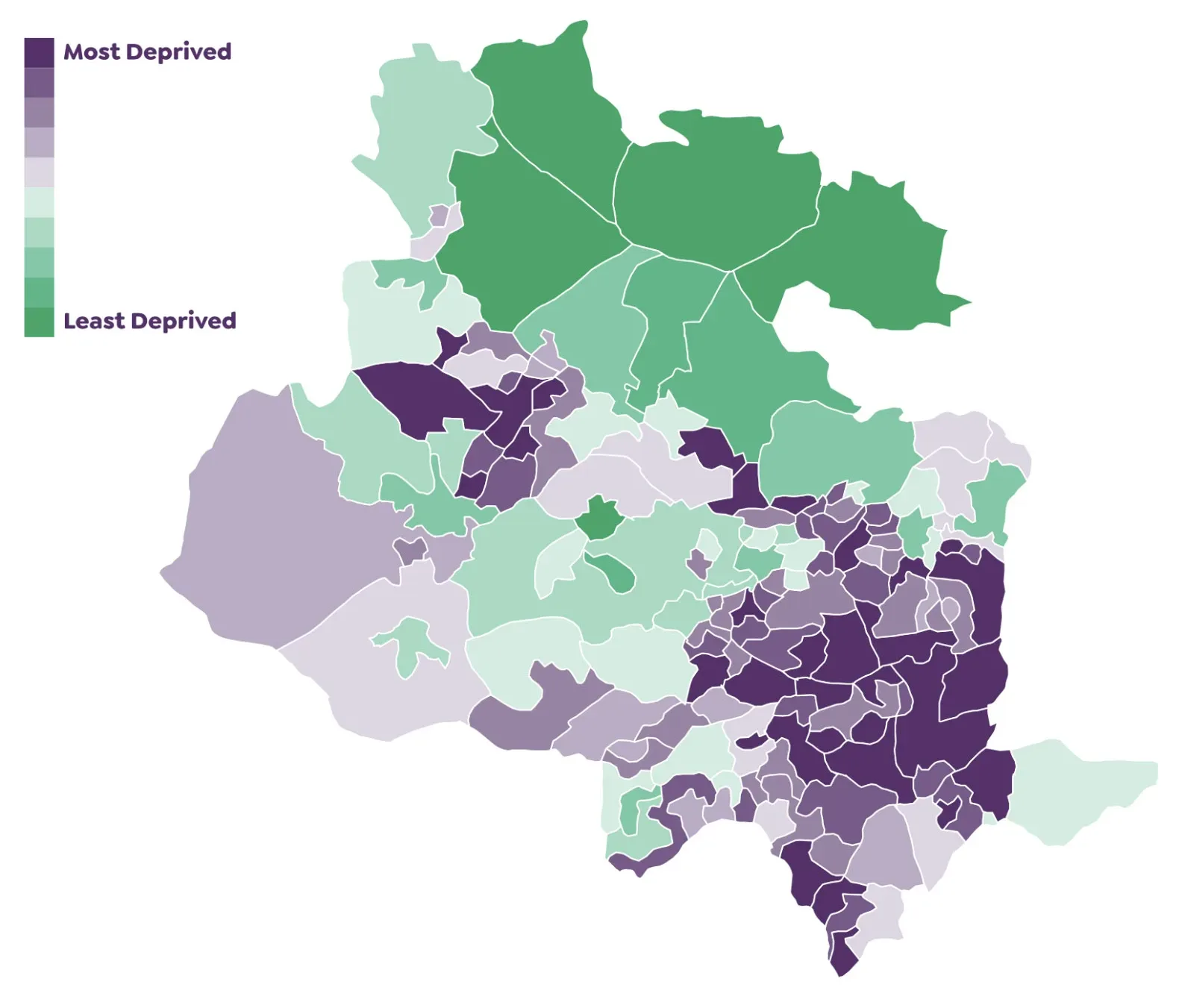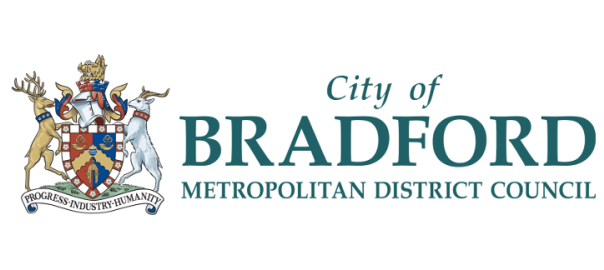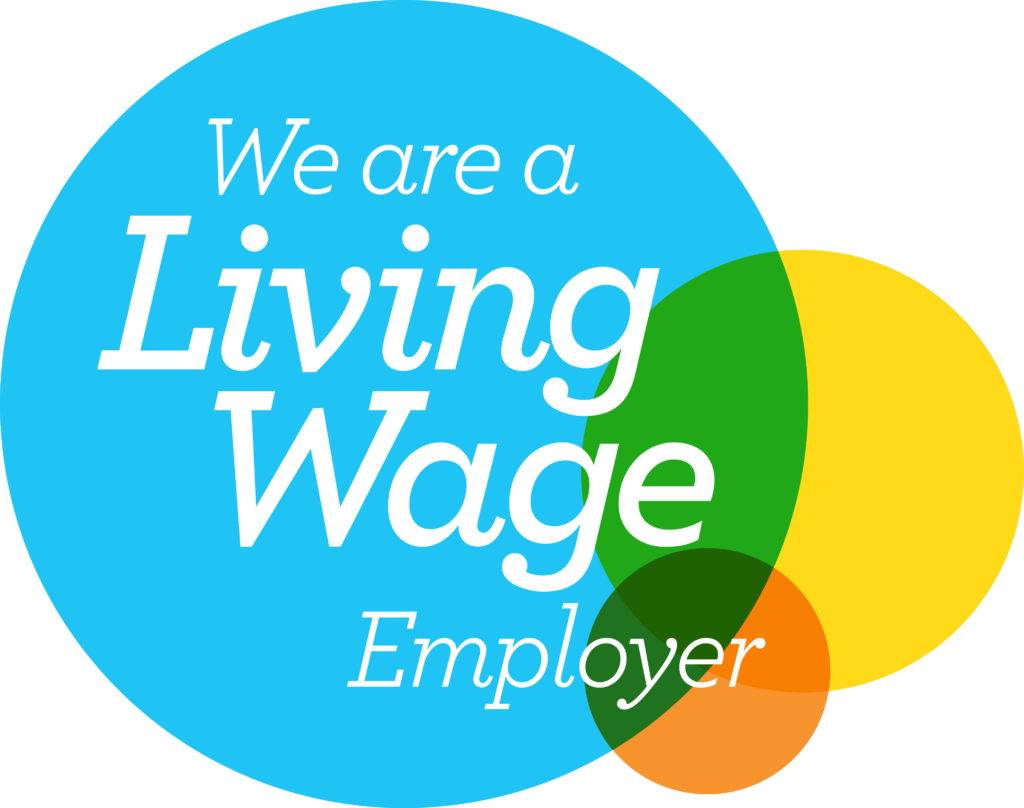In total, 17% of households in Bradford experience multiple forms of deprivation. 22% of children are living below the poverty line, 15% of people are experiencing fuel poverty and the local authority district is ranked the 5th most deprived for income and 6th most deprived for employment in England22. Rates of unemployment in Bradford are high – 7.1%23 compared to 3.8% for England.24 However, there are signs of improvement – there was a reduction of over 20% in levels of unemployment in the last year and self-employment in Bradford has grown 23% in the last 10 years.25
Table 1: Indices of Multiple Deprivation in England 2019
| City |
Decile 1 (highest 10%) |
Decile 2-3 |
Total in highest 30% |
| Bradford |
28% |
26% |
54% |
| England |
10% |
20% |
30% |
| Sheffield |
23% |
17% |
40% |
| Newcastle |
28% |
19% |
47% |
| Gateshead |
16% |
36% |
52% |
Source: English indices of deprivation 2019.
In comparison to other cities in England, Bradford has a larger percentage of LSOAs (Lower Super Output Areas) that suffer from high levels of income deprivation in the top 30% bracket. The Index of Multiple Deprivation (IMD) rankings were used to measure the percentage of localities in each city that fall into each decile (1-10) of deprivation, with decile 1 representing the 10% with the highest levels of deprivation in England.
Bradford is also in the lowest 20% of the country for median earnings, has fewer schools rated ‘Outstanding’ by Ofsted and has one of the 20% largest earnings gaps between the lowest and highest resident incomes, signifying reduced opportunity.26
Figure 11: Indices of Multiple Deprivation map of Bradford 2019

Source: City of Bradford Metropolitan District Council, Intelligence Bulletin (4th October 2019).
There are significant local socio-economic variations within the Bradford area. The data above does not reflect the differences at the local level within the Bradford district. The least deprived areas are mostly in the north of the district in Ilkley, Burley in Wharfedale, Menston, Bingley and rural villages around. Areas suffering from the highest levels of deprivation, include the local areas in and around central Bradford such as Bradford Moor and Manningham and outlying Bradford housing estates - particularly Holme Wood, Ravenscliffe, Buttershaw and Allerton and in Keighley.










